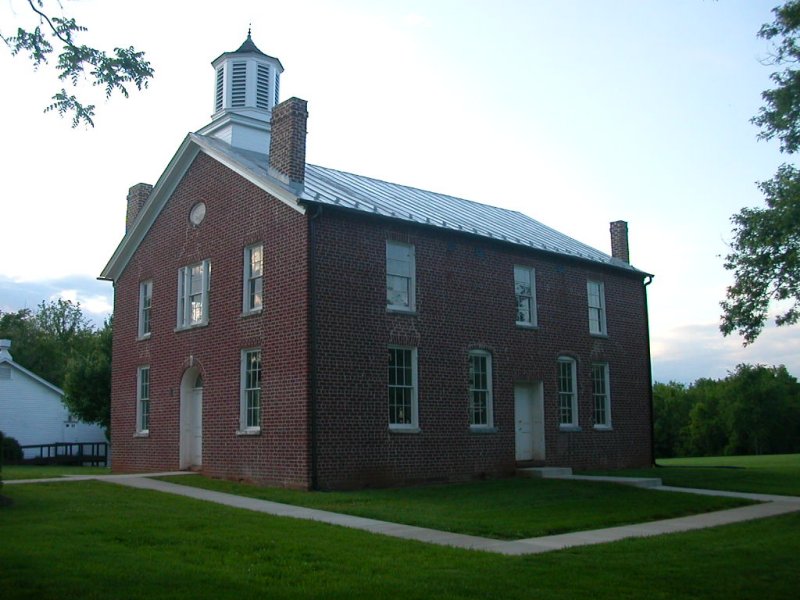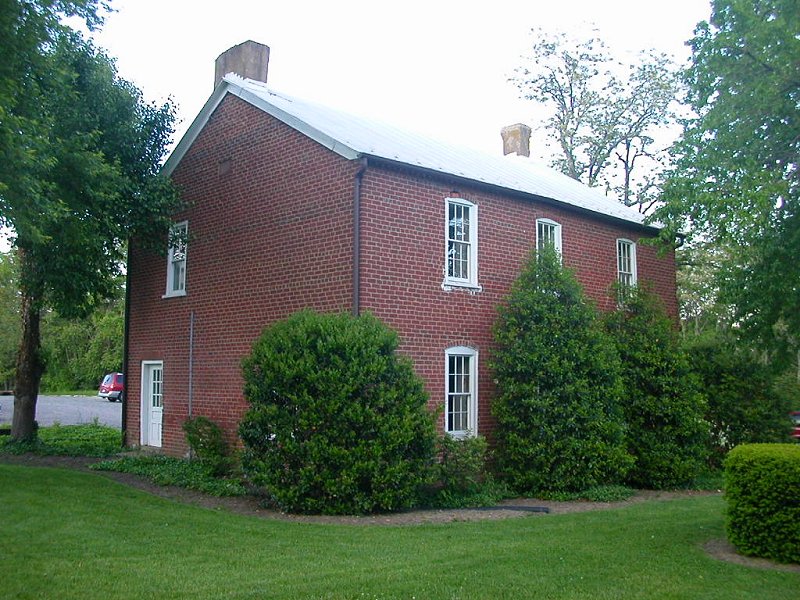
Brentsville Courthouse (1822-94)
Courthouses were located at places convenient to the majority of residents. The General Assembly determined the site of the courthouse when counties were first created, and the colonial legislature had to authorize changes in courthouse locations.
When Prince William County was chartered by the General Assembly in 1730, the first courthouse was located on the banks of the Occoquan River, where the wooden bridge crossed the river. Today, there is a small marker at Woodbridge on the southbound side of Route 1 just south of the river, recording the location of Prince William County's first courthouse.
That site was the not the center of the new county, which at the time included what are now Fauquier, Loudoun, and Fairfax counties plus various independent cities surrounded by those counties. The site was on the eastern edge, but on the Potomac River. Colonists relied upon the river as a transportation corridor to export tobacco and other farm crops to market. Colonial settlement moved inland from the river's edge, and ultimately the county's courthouse moved inland to follow the population pattern.In colonial days, county courts combined executive, legislative, and judicial roles. The colonial governor appointed justices of the peace to the county court, and those justices set tax rates, determined when roads needed to be "viewed" and repaired, recorded deeds, and determined innocence or guilt for most crimes. (Capital crimes, where a white person could be executed, were referred to the court in Williamsburg. Slaves could be executed upon order of a county court.)

Residents had to go to the courthouse to record deeds for buying/selling property, and pay taxes, and to vote. Colonial-era court days were big events, in the days without television or radio - or shopping centers. County residents would gather to hear trials, trade gossip/news, and shop at booths set up on the courthouse lawn.
Fairfax County moved its courthouse from the original location near Tysons Corner to Alexandria, and then to the center of the county in 1800 when Alexandria was incorporated into the District of Columbia. Loudoun picked a location near the geographic center, not the population center, when it located its courthouse. When the courthouse building needed to be replaced, Loudoun rebuilt on the same site, and did not move the administrative/judicial offices to a new location as population increased (or decreased) in different portions of the county.
Prince William moved the location of its courthouse 5 times. As Prince William's boundaries changed, after Fairfax/Loudoun was carved out in 1742 and then Fauquier in 1759, the "center" of the county shifted.
The location of the first courthouse is on the border with Fairfax County, while the location of the second courthouse is near the border with Fauquier County (and now within the boundaries of Quantico Marine Corps Base). Unless you understand the shifting boundaries of the county, the idea that courthouses were "central places" would appear to be just silly.
Did you notice that the location of the second courthouse was near the physical center of the county, but that location was abandoned when Fauquier County was created. However, the third courthouse was not placed in the new physical center. Instead, the 1760-1822 courthouse was convenient to a population that was concentrated on the banks of the Potomac River. The last shift, from the fourth courthouse in Brentsville to the fifth courthouse in 1894, was triggered by the desires of residents in the growing town of Manassas. It required three votes to get the county's government center re-located to the population center on the railroad, but ultimately Brentsville was abandoned and a stone courthouse was built in Manassas.
It was easier in the "good ol' days" to define the county "seat," equivalent to the capital of the county. The seat of the county was at the location of the courthouse of a county; all county officials were based there. In the courthouse, or nearby, were offices for the clerk of the court to record deeds, the elected county officials (now known as county "supervisors" rather than justices of the peace), the tax collectors, the judges who ruled on guilt or innocence, and the sheriff. Even the jail was located next to the courthouse, and gallows would be nearby as well. (Today, all executions occur at a state prison near the North Carolina border.)
However, in Fairfax and Prince William counties, the location of the county seat can be confusing now. Administrative staff in both counties outgrew the space available on county property surrounded by the independent cities of Fairfax and Manassas. Both counties relocated administrative staff to government centers away from the downtown offices where the courthouses and jails are still located. Fairfax County has a "Government Center," while Prince William created the McCoart Administrative Center (named after the supervisor for the Neabsco Magisterial District, who had to resign for health reasons in 1982 and died shortly thereafter).
